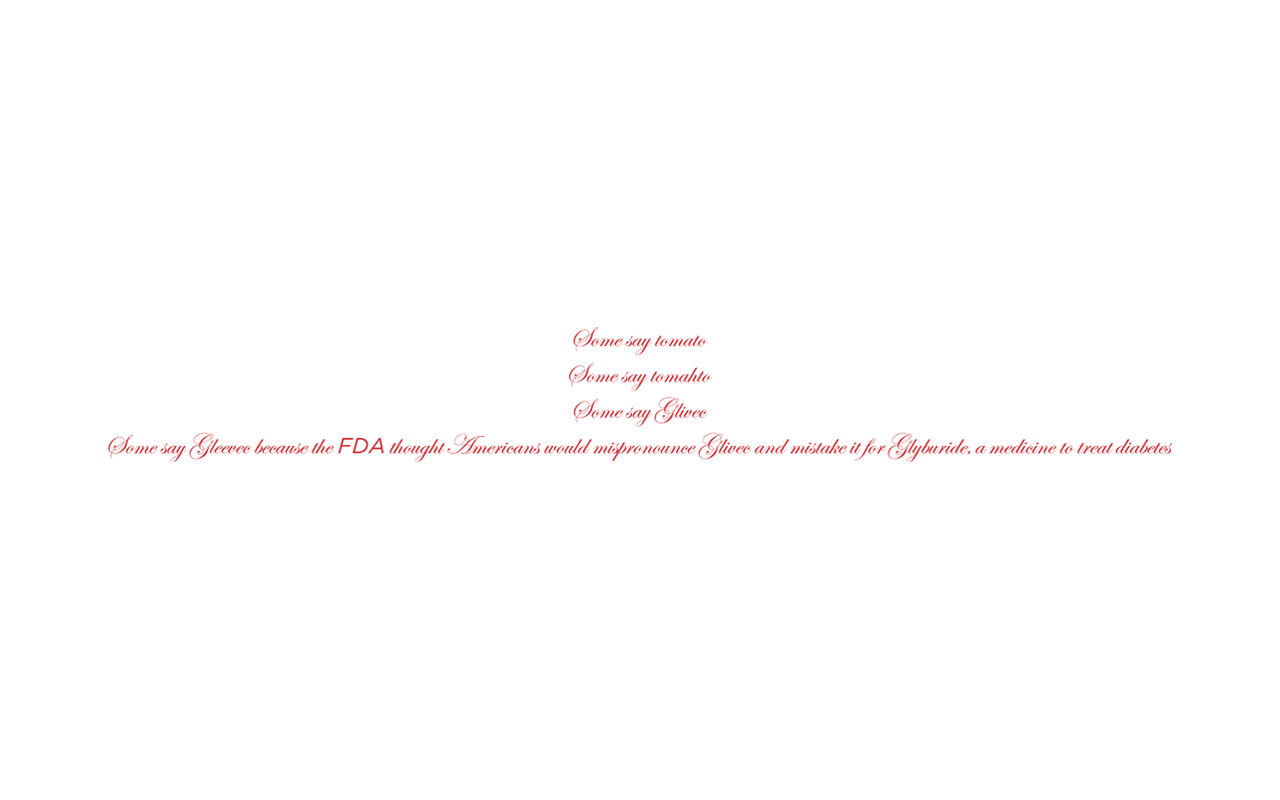
ART FOR ONCOLOGISTS
Artist: Jim Riswold
Art for Oncologists was exhibited at the Augen Gallery in Portland , Oregon, United States in October 2013.
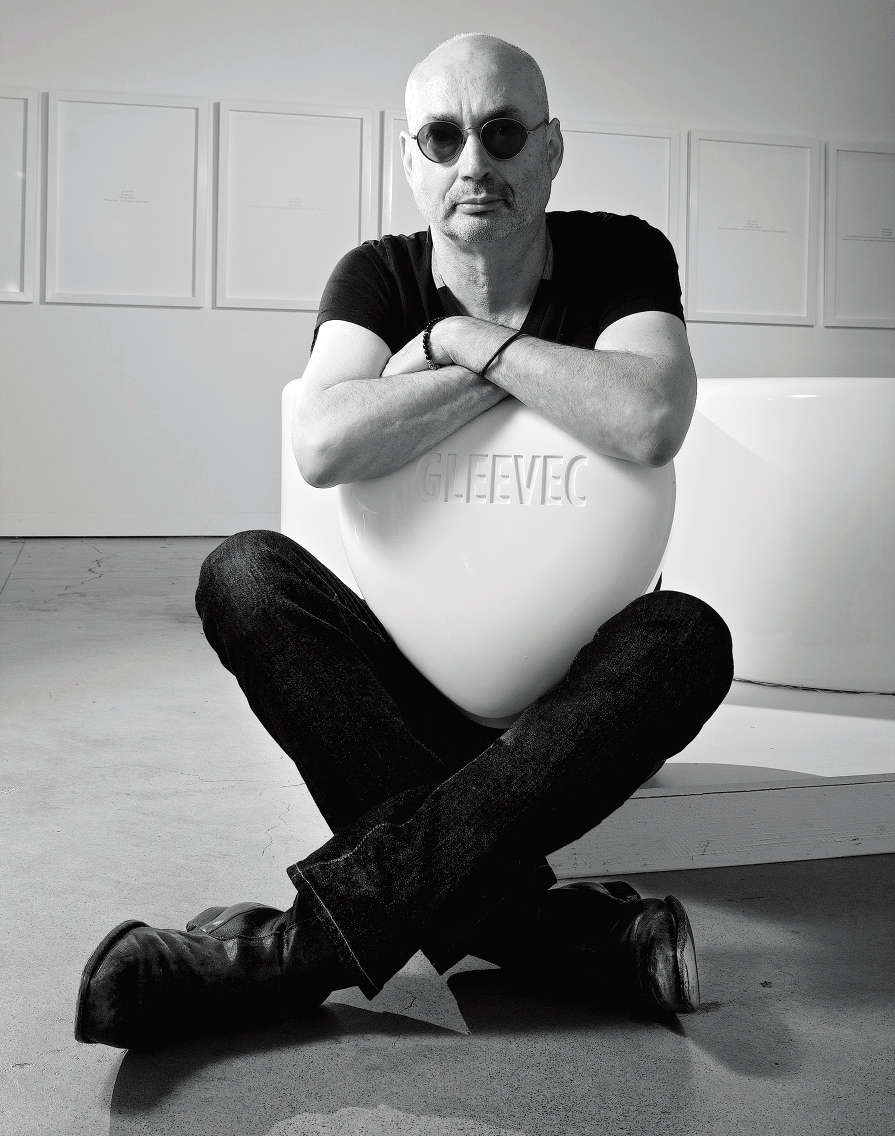

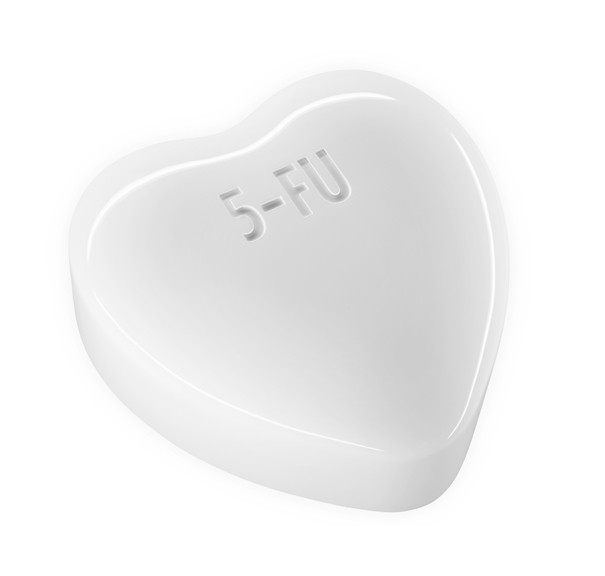
Front Title
This is where the text for the front of your card should go. It's best to keep it short and sweet.
5-FU
5-FU is an antimetabolite.
Antimetabolite is oncologist-speak for “it fucks with the production of DNA and RNA and stops the growth of cancerous cells.”
5-FU helped save my friend Shaine Edwards’s life.
Thank you, 5-FU.
It should come as no surprise that this piece is dedicated to my friend Shaine Edwards. Giving cancer the FU has emboldened Shaine in many ways, not least of all his sartorial selections. He now has the confidence to wear ill-fitting shirts featuring kittens shooting laser beams out of their eyes.

Front Title
This is where the text for the front of your card should go. It's best to keep it short and sweet.
BCNU
An oncologist will tell you BCNU means Bis-chloroethylnitrosourea.
An oncologist will then go on to tell you that BCNU is a mustard gas–related β-chloro-nitrosourea compound used as an alkylating agent in chemotherapy to treat several types of brain cancer (including glioma, glioblastoma multiforme, medulloblastoma and astrocytoma), multiple myeloma and lymphoma (Hodgkin’s and non-Hodgkin’s) and is sometimes used in conjunction with alkyl guanine transferase (AGT) inhibitors, such as O6-benzylguanine, that increase the efficacy of BCNU by inhibiting the direct reversal pathway of DNA repair, which will prevent formation of the interstrand crosslink between the N1 of guanine and the N3 of cytosine.
Urban Dictionary will tell you BCNU means “be seeing you.”
OMG, my oncologist is calling me. BCNU.
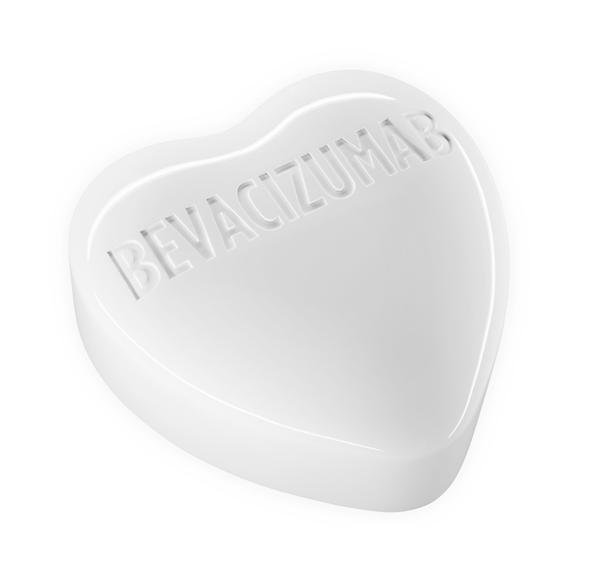
Front Title
This is where the text for the front of your card should go. It's best to keep it short and sweet.
BEVACIZUMAB
Napoleone Ferrara invented Bevacizumab with the help of a cow.
In 1989, he found that something in the bovine pituitary gland caused blood vessel cells to grow quicker than normal. He went on to isolate the gene and, like any good scientist, called it something nobody could pronounce: vascular endothelial growth factor or VEGF for short.
It led to an idea for a cancer drug based on a theory by Harvard’s Judah Folkman that had been floating around the cancer world since 1971, namely that since tumors need their own blood vessels to receive nourishment, choking those vessels could, in essence, starve tumors to death.
Ferrara reasoned that if he could block VEGF, then cancer cells would not be able to grow. So his colleagues at Genentech created a monoclonal antibody that would bind to VEGF and stop it from doing its job.
In 2004, 15 years after Ferrara’s discovery, the FDA approved Bevacizumab for combination use with standard chemotherapy for metastatic colon cancer.
A blockbuster was born.
It got a much catchier name: Avastin.
The cancer world, Genentech and Genentech shareholders thought they had a miracle drug on their hands.
(Never mind the first trials of Bevacizumab to treat late-stage breast cancer were complete failures and Genentech’s stock dropped 10% in one day.)
The word cure was bandied about. No less than Nobel laureate James Watson proclaimed that it would lead to the cure of cancer within two years.
The FDA quickly approved it for the treatment of boatloads of other cancers: non-small cell lung cancer in 2006, breast cancer in 2008, metastatic renal cell cancer in July 2009 and recurrent glioblastoma multiforme in May 2009.
Genentech tested in trials for even more boatloads of cancers.
Avastin became the best-selling cancer drug in the world.
It also became one of the most expensive, costing up to $100,000 a year for certain cancers.
But.
It hasn’t work as well as once hoped.
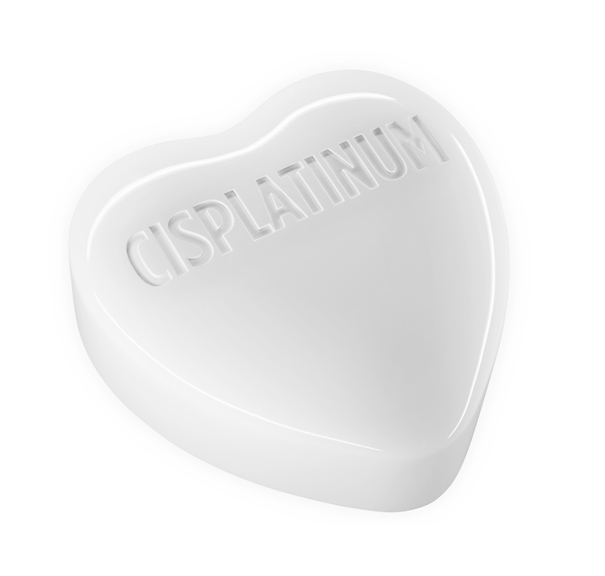
Front Title
This is where the text for the front of your card should go. It's best to keep it short and sweet.
CISPLATINUM
Cisplatinum was discovered by bacteria.
In 1965, Barnett Rosenberg was researching the effects of an electric field on the growth of bacteria. He noticed that bacteria cells stopped dividing when exposed to an electric field, specifically because of the two platinum electrodes he was using.
Rosenberg went on to prove that Cisplatinum cured solid tumors in rats. On December 19, 1978, the FDA approved Cisplatinum for testicular and ovarian cancers.
It has proved to be a real pain for testicular cancer. Cisplatinum has increased the cure rate from 10% to 85%.
Cisplatinum has also proved to be the most debilitating chemotherapy and may cause nephrotoxicity, neurotoxicity, nausea, vomiting, ototoxicity, electrolyte disturbance, myelotoxicity and hemolytic anemia.
Those are some serious side effects. In the early days of its use and long before the antinausea medications of today, patients threw up on average 12 times a day.
The severity of Cisplatinum’s side effects has earned it the dubious nickname “Cisflatten.”
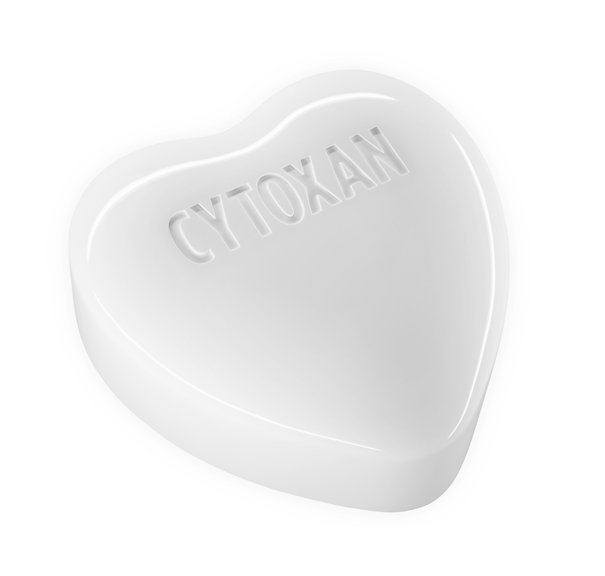
Front Title
This is where the text for the front of your card should go. It's best to keep it short and sweet.
CYTOXAN
I’ve always thought Cytoxan sounded more like an evil Jewish nemesis of Batman than any kind of drug I would ever want in my body.
Holy hematology, Batman—it’s Cy Toxan!
Cytoxan is a brand name for Cyclophosphamide. Endoxan, Neosar, Procytox and Revimmune are other brand names for Cyclophosphamide, but they don’t sound anywhere near as sinister as Cytoxan.
Cytoxan is one of the ingredients, along with Hydroxydaunorubicin, Oncovin and Prednisone, in the chemotherapy regimen CHOP and is primarily used to treat lymphomas.
Cytoxan helped save my Jewish friend Glenn Rockowitz’s life.
Holy Cyclophosphamide, Batman—Cy Toxan saved Rockowitz’s life!
A sheynem dank, Cytoxan.
This piece is dedicated to my friend Glenn Rockowitz. Glenn has beaten three different cancers and is and always will be the funniest and most obnoxious person I am lucky enough to know. I hope that Glenn will continue to be funny and obnoxious for no less than the next 50 years.
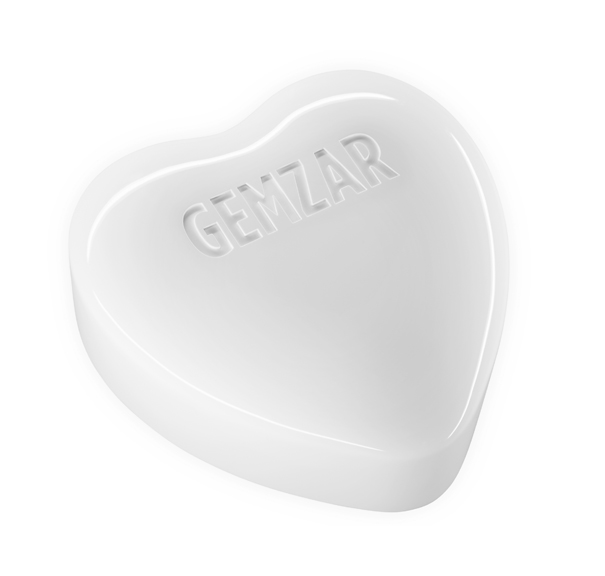
Front Title
This is where the text for the front of your card should go. It's best to keep it short and sweet.
GEMZAR
Gemzar sounds more like a sibling of the Great Gazoo from the Flintstones than a chemotherapy drug.
Gazoo is a green alien from the planet Zetox who can float, snap his fingers to make objects appear and disappear, stop time, travel through time and do all kinds of great things.
Gemzar is a nucleoside metabolic inhibitor from the Eli Lilly and Company and can treat breast cancer, ovarian cancer, non-small cell lung cancer and pancreatic cancer.
Gemzar wins.
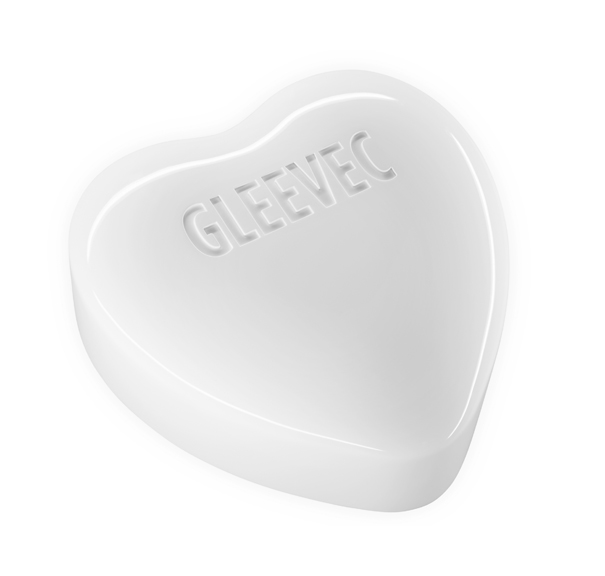
Front Title
This is where the text for the front of your card should go. It's best to keep it short and sweet.
GLEEVEC
On August 16, 2000, I was diagnosed with chronic myelogenous leukemia.
I was told I had somewhere between two to four years to live.
Later that year, Brian Druker calls me while he’s boarding a plane to Houston and tells me, “I hear we have to meet.”
We meet. He introduces me to daily doses of Interferon. Interferon is no fun.
In May of 2001, I meet Gleevec, Druker’s newfangled treatment for CML.
Sometime in early 2004, my mom and I watch a movie called Ripley’s Game. It’s about a family man who wants to provide more for his family and becomes a hit man because he has nothing to lose. He has nothing to lose because he is dying of CML.
This upsets even my chronically optimistic mother. I try to assure her that despite my illness, I will not become a hit man. I don’t convince her.
Later in 2004, tests can’t find any leukemia in 100,000 of my cells.
They still can’t.
Thank you, Brian.
My mom thanks you a thousand and one times for preventing me from becoming a hit man.
This piece is dedicated to my mom, Paularose Riswold. She, despite no oncology know-how, is one of the most powerful weapons against cancer in the whole history of everything.

Front Title
This is where the text for the front of your card should go. It's best to keep it short and sweet.
HERCEPTIN
Herceptin is a movie star.
Herceptin starred in Living Proof with Harry Connick Jr., a movie based on Dr. Dennis Slamon’s development of the drug.
Living Proof is not to be confused with Living Proof: The Hank Williams Jr. Story.
Before Herceptin was a movie star, it was a literary star featured in the book Her-2: The Making of Herceptin, a Revolutionary Treatment for Breast Cancer.
Herceptin was indeed a revolution—a revolution that took 12 years.
Slamon and his colleagues at UCLA identified the HER-2/neu oncogene, human epidermal growth factor receptor no. 2. Thankfully, he called it HER-2 for short.
He found that 25% of breast cancer patients were HER-2 positive, which meant that they had a protein that caused cancer cells to reproduce uncontrollably and, subsequently, their tumors to grow much faster. There was no happy ending for these patients.
Slamon targeted that gene. He discovered a BFD: when he added an antibody to the specific protein he slowed cell growth and the resulting tumor shrank dramatically. His original studies showed that Herceptin, then known as the tongue twister Trastuzumab, improved overall survival in late-stage breast cancer from 20.3 to 25.1 months.
In September 1998, the FDA approved Herceptin to treat HER-2 positive woman with metastatic breast cancer. It was the first targeted chemotherapeutic agent to receive FDA approval.
Herceptin’s real star is Barbara Bradfield.
The art teacher was dying from terminal metastatic breast cancer. In 1992, she participated in Slamon’s phase one trials of Herceptin. In 1993, she showed no trace of the disease.
Today, she lives happily ever after in Puyallup, Washington.
This piece is dedicated to my friend Hildur Solvadottir whose name is harder to pronounce than Trastuzumab, the chemotherapy that helped her beat breast cancer. In case you don’t speak oncologist, Trastuzumab is the generic name for Herceptin.
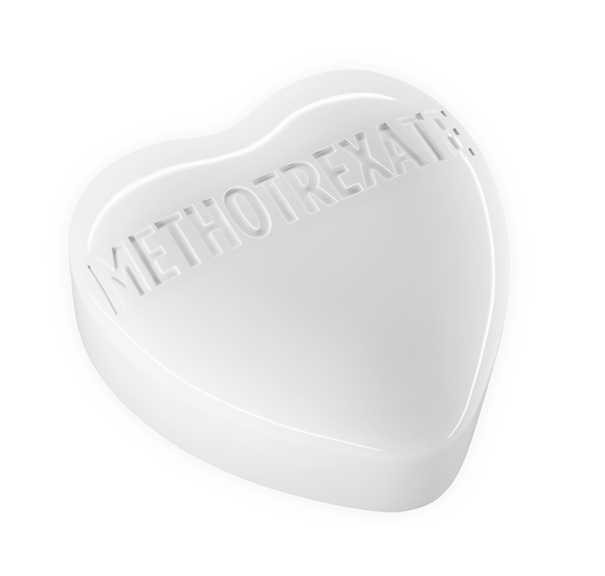
Front Title
This is where the text for the front of your card should go. It's best to keep it short and sweet.
METHOTREXATE
Methotrexate is a BFD in the history of chemotherapies.
In 1950, Yellapragada Subbarao developed Methotrexate. Before that Subbarao was no slouch in the history of chemotherapies: in 1947 he synthesized Aminopterin and provided Sidney Farber with the chemical to get the first remissions in the history of childhood leukemia.
In 1951, Jane Wright used Methotrexate to get remissions in breast cancer tumors.
In 1956, Min Chiu Li used Methotrexate to get remissions in women with choriocarcinoma and chorioadenoma.
In 1960, Wright used Methotrexate to get remissions in mycosis fungoides.
Today, 63 years after Subbarao invented it, Methotrexate is used either alone or in combination with other chemotherapeutic agents to get remissions in a lot of cancers, including, breast, head and neck, leukemia, lymphoma, lung osteosarcoma, bladder and trophoblastic neoplasms.
It is also used to treat rheumatoid arthritis, juvenile dermatomyositis, psoriasis, lupus, sarcoidosis, Crohn’s disease and many forms of vasculitis.
Methotrexate is a BFD. Subbarao is a bigger BFD for inventing it.
In 1950, Doron K. Antrim wrote, “You’ve probably never heard of Dr. Yellapragada Subbarao. Yet because he lived you may be alive and are well today. Because he lived you may live longer.”
In 1981, Subbarao got a fungus named in his honor: Subbaromyces splendens.
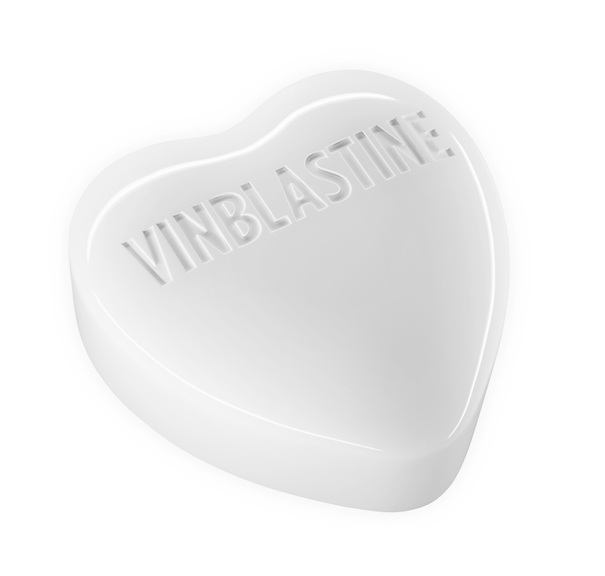
Front Title
This is where the text for the front of your card should go. It's best to keep it short and sweet.
VINBLASTINE
Vinblastine was discovered by drinking tea.
It was found that drinking tea containing leaves from the Madagascar periwinkle plant caused a drop in white blood cell counts and from there Robert Noble and Charles Thomas Beer hypothesized that the plant might be effective against cancers of the white blood cells.
They hypothesized right. In 1958, they isolated extracts from the plant and called it Vincaleukoblastine. Then they shortened it to Vinblastine. Then they shortened it again to VLB.
The folks at the International Union of Pure and Applied Chemistry (IUPAC) did not shorten it.
Artist Biography: Jim Riswold
Jim Riswold is a realist, a dreamer, a philosopher and an artist in their truest forms. Riswold’s work in copywriting is well known by Honda enthusiasts and equally matched by sports fans familiar with Nike commercials featuring Michael Jordan and Tiger Woods and other star athletes. After being diagnosed with leukemia in 2000, Riswold left the advertising world to become a full-time contemporary artist, and a successful one at that. His works playfully toy with taboo subjects and infamous political figures, such as Adolf Hitler, Mao Zedong, among many others. Riswold pushes the boundaries of absurd realism through photography, silkscreen and sculpture. In 2014, Riswold faced cancer head-on in his installation Art for Oncologists, which premiered at the Augen Gallery, in Portland, Oregon. Prized as one of the 100 most influential people in American culture, Riswold's Art for Oncologists highlights the science and the agony of chemotherapy.
Artist Statement
It took 13 years to live through and two years to make. During that time, I have learned my fair share about all things oncology.
Imhotep described what is believed to be the first case of cancer, breast cancer in a man, in 2500 BC. As far as a recommended treatment, he offered only the chilling words, “There is none.”
Atossa, the queen of Persia, had the first radical mastectomy in 440 BC. 2,500 years later, this surgery is still being performed.
I now know why I should know the names Yellapragada Subbarao, Sidney Farber, Mary Lasker and Barnett Rosenberg.
The first patented animal was a mouse bred specifically to be susceptible to cancer. His name is OncoMouse and, yes, he has a ® after his name.
I think I know what the “HER-2/neu oncogene, human epidermal growth factor receptor no. 2” means.
Vinblastine was discovered by drinking tea.
5-FU helped save Shaine’s life, Cytoxan helped save Glenn’s life, Herceptin helped saved Hildur’s life and Gleevec flat out saved Aldo’s life.
MOPP is a chemotherapy regimen consisting of Mechlorethamine, Oncovin, Procarbazine and Prednisone. It is also an acronym used by the military meaning Mission Oriented Protective Posture, which is a type of safety gear used by military personnel during a chemical, biological, radiological or nuclear attack.
There was a movie about Herceptin starring Harry Connick Jr. as Dr. Dennis Slamon, the father of Herceptin. I learned crooners turned actors don’t make the best oncologists.
I also came to the conclusion that Gemzar sounds like a sibling of the Great Gazoo from the Flintstones.
I haven’t come across or used so many big-assed words since I wrote philosophy papers about Hegel back in the early 80s.
Can you say (SP-4-2)-diamminedichloroplatinum?
Can you use (SP-4-2)- diamminedichloroplatinum in a sentence?
Seriously, as a survivor of two cancers, working on this show was an emotional experience.
Duh.
Especially when I made stuff about chemotherapies that saved lives of friends of mine.
Double duh.
Call it enlightened self-interest, but I am fond of having my friends around.
Triple duh.
I guess you could call this show a celebration.
Long live oncologists!
Longer live their mice!
Longest live their patients!
And, yes, even long live their language filled with senseless and really long words.
Actually, despite all its (SP-4-2)-diamminedichloroplatinums and Bis-chloroethylnitrosoureas and BEACOPPs, ChlVPPs, DICEs, MAIDs, PEP-Cs, POMPs, TIPs, VAMPs and VIPs, the core of this language can be translated into a single word:
Hope.
Hope you like Art for Oncologists.
Even more, I hope it gives you a big dose of hope if you or someone you love is dealing with the disease that oncologists were put on this planet to deal with.
Love,
Riswold
Science Statement
Art for Oncologists , inspired by Riswold’s personal journey and experiences as a cancer patient, directly engages with medical disciplines of Oncology, Pharmacology and Pathology. Riswold’s chemo-hearts represent a pharmaceutical journey on the path to recovery. In addition, the script associated with each drug not only educates the audience about a need-to-know distant scientific world of chemotherapy, but also intertwines a ubiquitous human experience of fear, hope and loss as they relate to cancer.

A BIG BOWL OF CHEMOTHERAPIES (AND ONE ZOFRAN)
Share this Post








